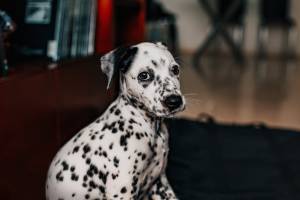
Understanding the Root Cause
When a grown dog starts peeing inside the house, it can be a sign of various underlying issues. It’s crucial to first rule out any medical conditions by consulting your veterinarian. Incontinence, urinary tract infections, diabetes, and other health concerns can lead to accidents in the house. Additionally, emotional stress, anxiety, or territorial marking might also contribute to this behavior. By identifying the cause, you can tailor your approach to effectively address the problem.
Establishing a Consistent Routine
Consistency is key when it comes to managing your dog’s bathroom habits. By establishing a regular feeding schedule and implementing consistent bathroom breaks, you can help your dog develop a predictable routine. Take your dog outside first thing in the morning, after meals, before bedtime, and at regular intervals throughout the day. Be patient and give your dog plenty of time to do their business, offering positive reinforcement when they go outside.
Positive Reinforcement Training
Positive reinforcement is a powerful tool when it comes to training your dog. When your dog eliminates outside, be sure to offer praise, treats, and affection to reinforce the desired behavior. Conversely, avoid scolding or punishing your dog for accidents inside the house, as this can lead to anxiety and confusion. Instead, focus on creating a positive association with going to the bathroom outdoors. Consistent positive reinforcement will help your dog understand where they should be eliminating.
Addressing Anxiety and Stress
If your grown dog is peeing inside due to anxiety or stress, it’s important to address these underlying issues. Consider potential triggers such as changes in routine, new environments, or separation anxiety. Providing a safe and comfortable space, incorporating regular exercise, and engaging in calming activities such as interactive play or puzzle toys can help alleviate stress and anxiety. Additionally, consulting with a professional dog trainer or behaviorist can provide valuable insights and personalized strategies to address your dog’s specific needs.
Maintaining a Clean Environment
Accidents happen, but it’s essential to thoroughly clean and deodorize any indoor messes. Dogs have a keen sense of smell, and if an area smells like a bathroom spot, they may be inclined to use it again. Use enzymatic cleaners specifically designed to break down and eliminate pet odors, effectively removing any lingering scent that might attract your dog back to the same spot. By keeping your home clean and odor-free, you can help discourage repeat accidents.
Seeking Professional Guidance
If you’ve tried various strategies and your dog continues to pee inside the house, don’t hesitate to seek professional help. A veterinarian, certified dog trainer, or animal behaviorist can offer invaluable guidance tailored to your dog’s specific needs. They can help rule out any medical concerns, provide behavior modification techniques, and offer support to address challenging situations.
In conclusion, addressing a grown dog’s indoor peeing requires patience, understanding, and a proactive approach. By identifying the root cause, establishing a consistent routine, utilizing positive reinforcement training, addressing anxiety, maintaining a clean environment, and seeking professional guidance when necessary, you can help your dog overcome this behavior. With time, patience, and the right approach, you can support your dog in developing positive bathroom habits, creating a happier and more harmonious environment for both of you.
[/fusion_text]



